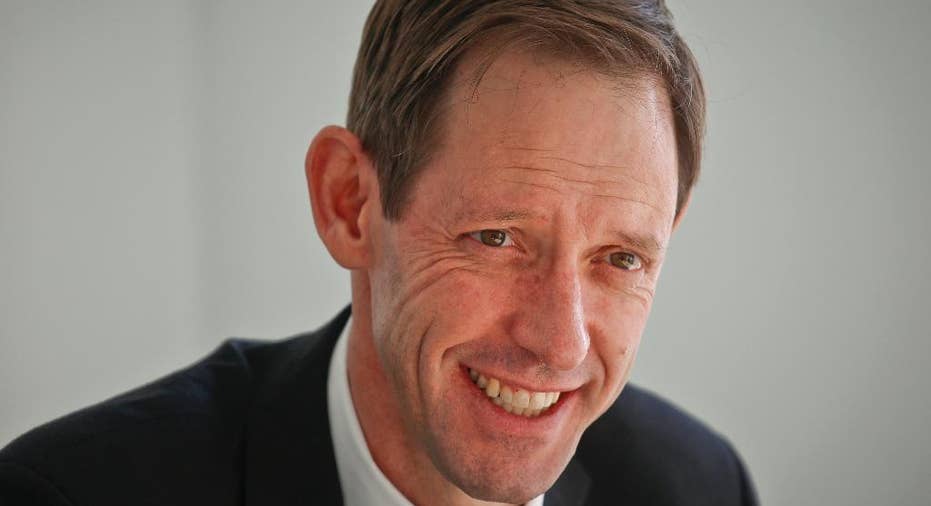Insider Q&A: De Beers CEO talks diamonds, millennials

NEW YORK – Instead of romantic proposals and engagement rings, the commercials trying to sell a new generation on diamonds show young couples rolling around on a bed, arguing in a car and even questioning whether they'll ever marry.
The ads are one way the diamond industry is trying to reach millennials, the under-35-year-olds who may be more focused on paying off student loan debt than buying diamonds and getting hitched.
De Beers, the company that helped pay for the new commercials, says millennials are still purchasing diamonds, even though they are typically less affluent than their parents were at the same age.
"They are buying smaller pieces," says De Beers Group CEO Bruce Cleaver.
De Beers, known for its longtime slogan "A Diamond is Forever," mines and then sells rough diamonds to dealers, jewelry retailers and manufacturers who cut and polish the stones. Besides that, its Forevermark-branded diamonds are sold at 2,000 jewelry stores around the world. And it partly owns 35 high-end De Beers stores with LVMH, the owner of luxury brands Louis Vuitton and Givenchy.
Cleaver spoke with The Associated Press about what younger people are buying and how the company tries to attract them. Questions and answers were edited for clarity and length.
Q: How are millennial diamond buyers different than older generations?
A: They are not as traditional as their parents. We find that they self-purchase more than their parents did and that's quite an interesting opportunity because there was a time when pretty much all diamond purchases were men buying for women. We also find that purchase decisions are much more joint decisions when they're a couple.
Q: Are you changing your advertising to reach these people?
A: Traditionally, diamond advertising was very much a man buying for a woman. We've started tailoring some of our adverts. There's a campaign running called "Ever Us" which we are a part of with Signet (the owner of the Jared and Kay chain of jewelry stores). It's very much around a more modern couple where the purchasing decision is a joint decision. It's actually a two-stone ring and the two stones are exactly the same size. That is very important because it symbolizes equality in the relationship.
There's another piece of marketing aimed at millennials. We co-fund and are a principal of the Diamond Producers Association, which has been formed to market diamonds generically. It's very different from a traditional diamond advert. It's got a couple who don't know if they're going to get married.
Q: How else do you get diamonds in front of millennials?
A: Often around events like Grammys, Emmys, Oscars, we find the celebrity that millennials identify with the most. We've had Claire Danes wear them. We've had Sophie Turner, who's in "Game of Thrones." So there's a range of celebrities who we'll dress in diamonds for these kinds of functions and then hopefully they will tweet and blog on their experiences.
For example, we opened the new De Beers store on Madison Avenue (in New York) and one of the people we had over was Fan Bingbing, who's an extremely well-known celebrity and actress in China. She blogs all the time and used all social media while she was in the store. That is tremendously successful marketing. That was deliberate to get her here; even though the store is on Madison Avenue, it's a business that is very focused on Chinese tourists.
Q: Did you have to pay Bingbing to come to the opening?
A: So in that case we had to pay her. Sometimes we have to pay celebrities. Sometimes they like the product and just wear it. Although it's generally not difficult to find people who'd like to wear fancy beautiful diamonds on the red carpet.
(A representative for Bingbing did not respond to a request for comment.)
Q: What are people in different countries buying?
A: China in general consumes better-quality diamonds and is brand conscious. The U.S., being the enormous market that it is, just about consumes anything that gets offered for sale across the whole value chain. India is generally very small diamonds, lots and lots of very small diamonds.
In America, repeat purchasing is a big thing. Once people have bought more than one piece of diamond jewelry in America, they on average buy six pieces over their life.
Q: What do you tell customers about sourcing your diamonds?
A: We've been well ahead of the game in ethical sourcing for a long time. When you buy a De Beers Forevermark diamond, it has a unique inscription number on it. And it comes with a certificate from the De Beers grading facilities where it was sourced and that there was no child labor, no unfair labor conditions and no environmental damage done.
Q: Where do you get your diamonds from?
A: We mine diamonds in four countries: Botswana -- by far the biggest producer of diamonds for us -- South Africa, Namibia and Canada.
Q: What countries buy the most diamonds?
A: The biggest market by far is the U.S. About 45 percent of diamond jewelry demand takes place in the U.S.
China, including Hong Kong, is about 16 percent. India is about 8 percent and Japan is about 5 percent.



















